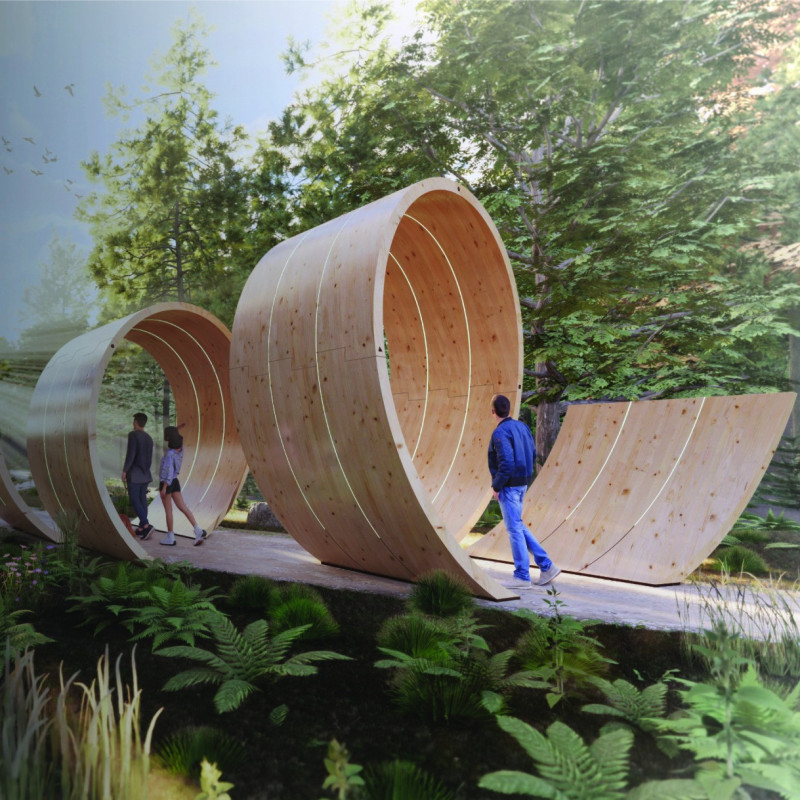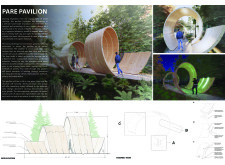5 key facts about this project
The PARE Pavilion stands in the woods of Maine, serving as a place for learning and exploration. Its design is inspired by the shapes of wood shavings, merging the delicate features of handmade wooden products with the durability of mass timber. Positioned along a walking trail, the pavilion invites visitors to experience its design both during the day and at night.
Construction Techniques
The pavilion features nine sections connected by box joints and uniquely shaped wooden pins. This method enhances both the structure's stability and the ease of assembly. By incorporating traditional woodworking techniques, the design remains grounded in craftsmanship while embracing modern architectural approaches. Each section is arranged to reflect the organic forms found in nature, creating a dialogue between the built environment and its surroundings.
Material Interaction
Phosphorescent wood adhesive highlights a key aspect of the pavilion. It absorbs sunlight during the day, emitting a gentle glow at night. This property not only enhances the visual appeal but also underscores the skill involved in the joinery methods. The relationship between this material and its setting contributes to a living environment, one that shifts and evolves over time.
Seasonal Adaptation
The design acknowledges the passage of time, aiming to stay in one location while adapting to seasonal changes. As the structure ages, visitors will notice variations in color, along with the emergence of decorative carvings, insect habitats, and the growth of moss. These seasonal transformations support the natural carbon cycle, allowing the pavilion to integrate into the ecosystem without disruption and emphasizing a connection to the surrounding landscape.
Interactive Features
Curiosity drives the pavilion's interactive elements, which allow visitors to learn about cross-laminated timber (CLT) methods and joinery practices. Engaging with these details fosters a deeper understanding of how design and sustainability intersect. The experience culminates in a sense of exploration, encouraging visitors to appreciate how architecture can reflect and enhance the natural world.



















































